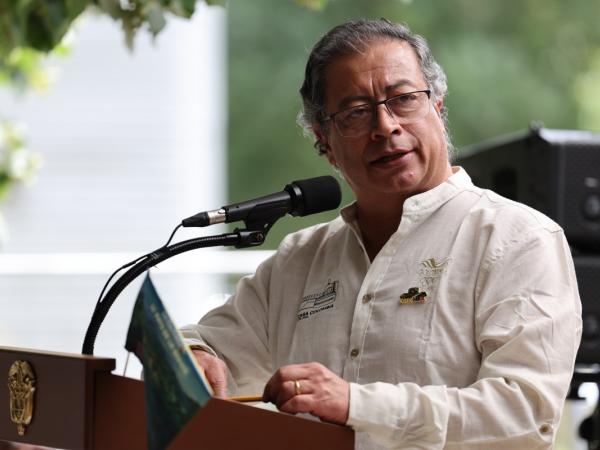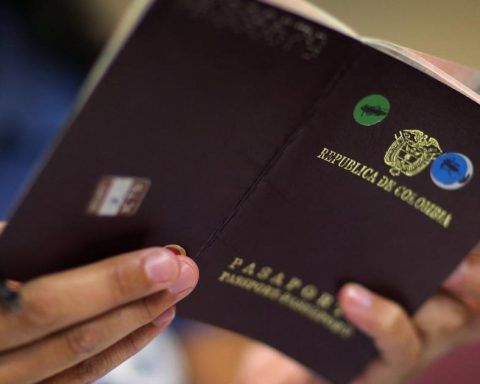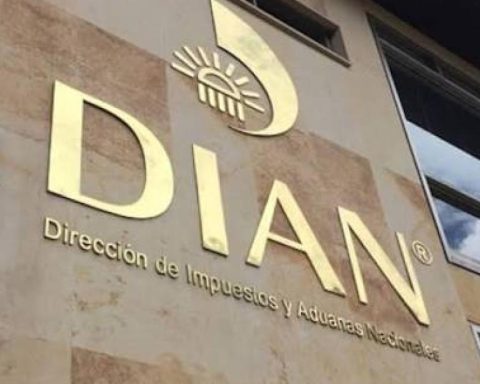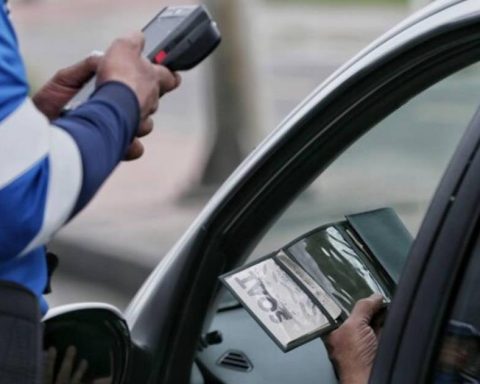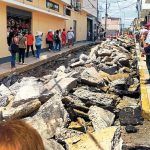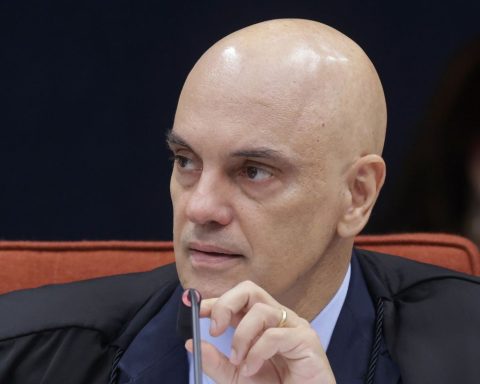There is one week left until two years have passed since Gustavo Petro assumed the presidency of Colombia and approval of his mandate seems unable to get out of the red numbers it has been racking up in recent months.
At least that’s what it shows the Colombia Opina survey, a survey conducted by Invamer that analyzes the image that Colombians have of different political figures.
According to the results, The approval rating of the head of state rose from 34% to 34.6%. A figure that, while it represents a slight improvement compared to the last survey of this type carried out in May, still faces a disapproval rate of 58.3%.
Data by region show that the highest levels of disapproval towards the president are concentrated in the regions coffee (65.7%) and central eastern (60%); while the acceptance rate is highest in the Caribbean (42.1%) and southwestern (36.3%) regions.
The government cabinet also did not receive a good rating. The survey shows that the favorability perception of the ministers of Defense (Iván Velásquez), Interior (Juan Fernando Cristo) and Finance (Ricardo Bonilla) is located at 15.1%, 13.4% and 11.4%, respectively.
As for Vice President Francia Márquez, the numbers show that disapproval levels are at 59.6%, 0.3 percentage points lower than in May 2023, when it reached 59.9%. Approval of her management, meanwhile, stands at 26.4%.
(Read more: Wear and tear of reforms would limit the fulfillment of the PND in education and health)
France Marquez
Cesar Melgarejo / THE TIME
Other data of interest
However, the survey also addressed different topics to find out what citizens’ perception is regarding the current situation in the country. In this sense, the results show that 65.2% of those surveyed believe that things are going in the wrong direction.
Regarding the main problem facing Colombia at this time, 23% of those surveyed point to unemployment. This is followed by poor government performance (19.9%), public order (19.1%) and corruption (15%).
(Read more: Gustavo Petro’s two-year government review)
Data sheet
COMPANY THAT CONDUCTED THE SURVEY: INVAMER SAS
NATURAL OR LEGAL PERSON WHO ORDERED IT: Noticias Caracol and Blu Radio.
FUNDING SOURCE: Noticias Caracol and Blu Radio.
GOALS:
❑ Evaluate the state of mind of the country as a whole and for each of its regions, including urban and rural areas, as well as capital and non-capital municipalities.
❑ Measure the President’s approval rating and the image of individuals and institutions in Colombia.
❑ Identify, according to public opinion, what is the main problem that Colombia has at the time of measurement.
❑ Know the public opinion on current events (current events).
❑ Observe the level of acceptance of people regarding certain laws, proposals or statements.
UNIVERSE:
Men and women aged 18 and over, from all socioeconomic levels nationwide, with urban and rural coverage (excluding the departments formerly called “National Territories”).
SAMPLING FRAME:
In the first phase of sampling, a National Census broken down by municipalities. In the second phase, a planimetry of each of the selected towns. In the third phase, households in the selected blocks in each town. In the fourth and final phase, people aged 18 or over, residing in each household. This sampling frame covers 100% of the target group.
SAMPLE SIZE AND DISTRIBUTION:
A total of 1,200 surveys were conducted and distributed in the following municipalities: Arbelaez, Armenia, Ayapel, Barrancabermeja, Barranquilla, Bethlehem, Bello, Bogota, Bucaramanga, Cali, Candelaria, Carepa, Cartagena, Cordoba, Cucuta, Dosquebradas, El Tambo, Espinal, Philadelphia, Fresno, Fusagasuga, Gachala, Ibague, La Cruz, La Dorada, La Victoria, La Virginia, Lebrija, Wept, Madrid, Maicao, Manaure, Medellin, Montelibano, Monteria, Mosquera, Neiva, Palmira, Pereira, Popayan, Pueblo Nuevo, Sabaneta, San Roque, Seville, Silvia, Soacha, Soledad, Tenjo, Tumaco, Turbaco, Valledupar, Villa De Leyva, Villanueva, Villavicencio (54 municipalities in total, of which 15 are Capitals). To adjust the sample distribution to the actual distribution of the universe by region and size, weighting factors were applied. This sample size is in accordance with the proposed sample size.
SAMPLING SYSTEM: A multi-stage sampling was carried out as follows: in the first stage, systematic random selection of 75 sample points throughout the country. In the second stage, systematic random selection of four blocks or villages in each sample point. In the third stage, systematic random selection of four households per block or village. In the fourth stage, simple random selection of one person aged 18 or older residing in the household.
ERROR RANGE: the margins of error within 95% confidence limits are: for the total sample of 1,200 surveys +/- 2.83%; for the total sample of Bogotá +/- 6.80%, North Caribbean +/- 6.33%, Central East +/- 5.77%, Antioquia/Eje Cafetero +/- 6.33% and South West +/- 6.55%; for the total sample of men +/- 4.01% and women +/- 3.99%; for the total sample of people aged 18 to 24 years +/- 7.61%, 25 to 34 years +/- 6.02%, 35 to 44 years +/- 6.81%, 45 to 54 years +/- 7.21% and 55 years or older +/- 5.05%; for the total sample of stratum (1-2) +/- 3.34%, stratum (3) +/- 6.46% and stratum (4, 5 and 6) +/- 9.34%; for the total sample of the urban area +/- 3.14% and rural +/- 6.55%; for the total sample of Capital municipalities +/- 4.08% and non-Capital municipalities +/- 3.92%.
DATA COLLECTION TECHNIQUE: personal surveys in the respondent’s home via mobile devices (tablets).
DATA COLLECTION DATE: from July 26 to 29, 2024.
NUMBER OF SURVEYORS: 53 interviewers participated in the study.
VALIDATION METHOD: 100% of the surveys conducted were reviewed and 10% of them were supervised.
TOPICS REFERRED TO: image of Colombian characters and institutions, main problem to be solved in the country, acceptance of laws, proposals or statements of the moment.
CHARACTERS OR INSTITUTIONS INVESTIGATED: refer to the questionnaire.
SPECIFIC QUESTIONS ASKED: refer to the questionnaire.
OUTSOURCING: Invamer did not hire the services of personnel from its external network to carry out this study.
(More news: What role is Colombia playing after not signing the OAS petition on Venezuela)
BRIEFCASE
